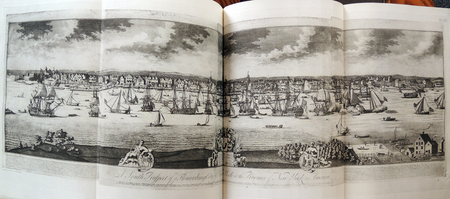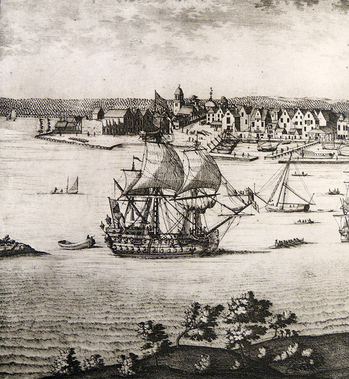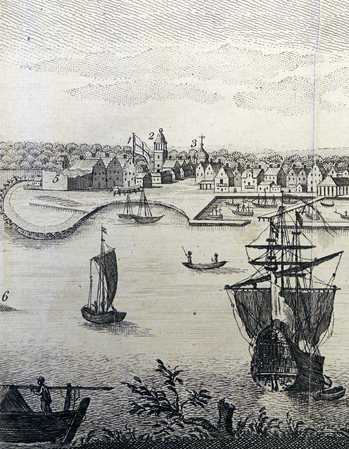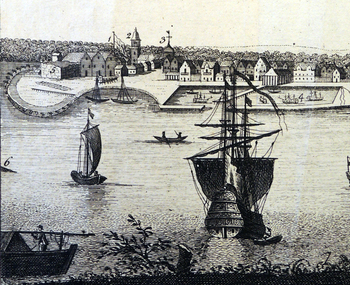reproduced for I.N.P. Stokes (1867-1944), The Iconography of Manhattan Island, 1498-1909 (New York: Robert H. Dodd, 1915-1928). Vol. 1, no. 25.
William Burgis (fl. 1722-1736), The South Prospect of the City of New York in America, n.d. [ca. 1717-1746]. Engraving. Graphic Arts Collection GA 2008.00231
William Burgis (fl. 1722-1736), The South Prospect of the City of New York, in North America, 1761. Engravings. Graphic Arts Collection GA 2008.00232
Beginning in 1716, William Burgis stood at the Brooklyn Heights shore and drew the waterfront along the east side of Manhattan, calling it “A South Prospect of the Flourishing City of New York in ye Province of New York in America.” The drawing was probably sent to London to have the British printmaker John Harris (active 1686-1740) engrave the design onto four copper plates, which were printed on sheets of paper 20 ½ x 9 ¼ inches, altogether over six feet long. We know it was completed by 1721 because it was advertised in The American Weekly Mercury as “A Curious Prospect of the City of New-York…”
Many reproductions, reduced in size, have been engraved over the years including the 1746 “Bakewell reissue” and in 1761, a new impression engraved for the London Magazine. Another appears in: William Loring Andrews (1837-1920), New Amsterdam, New Orange, New York (New York: Dodd, Mead and company, 1897) Graphic Arts Collection (GAX) 2009-2656N
When several editions are placed next to each other, it becomes evident that each is slightly different. The numbers identify important buildings, beginning with no.1: Fort Amsterdam first built in 1626. No.2 is a chapel and No.3, the “Secretaries Office” both inside the fort. No.4 is the “Great Dock with a bridge over it” built in 1659 at the bottom of Moore Street. No.5, the south-most buildings are the “Ruines of White Hall built by Governour Duncan [Dongan]”





